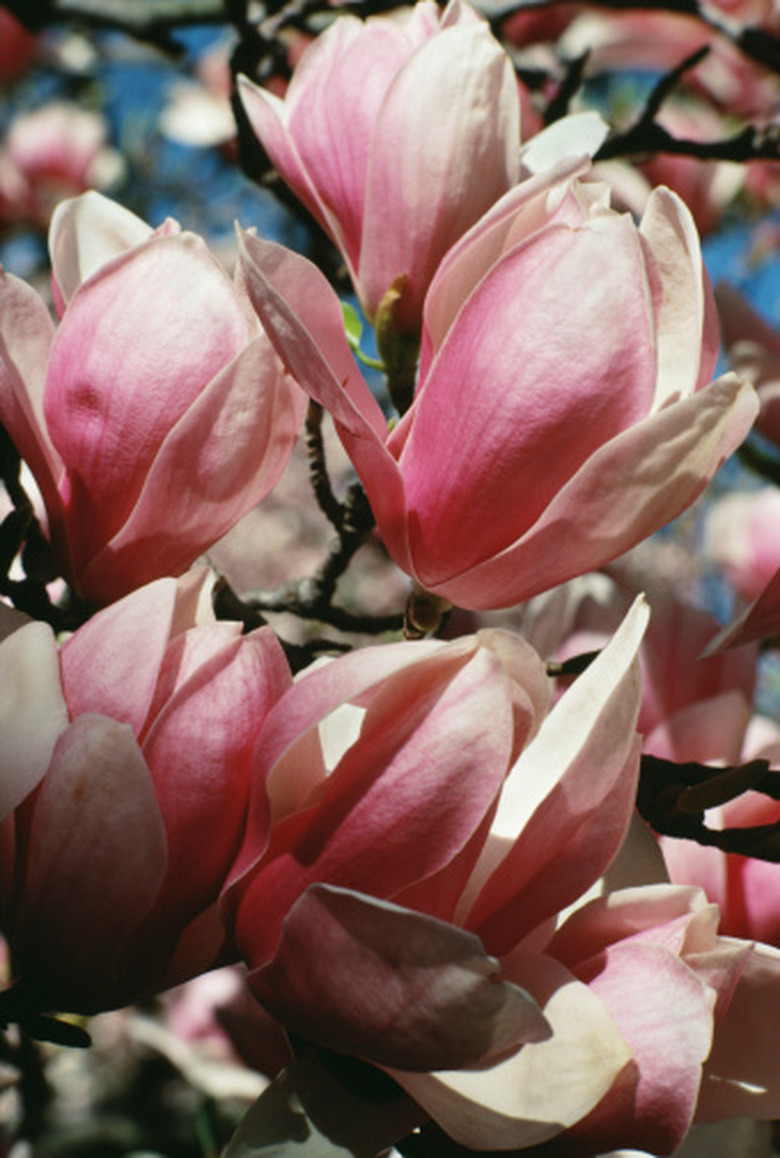The Best Time To Plant A Magnolia Tree
The magnolia tree is known for its striking, dramatic flowers, which come in a variety of colors. Although they are commonly associated with the southern United States, magnolia trees can be grown in a variety of regions.
Types
There are many types of magnolia trees, so familiarize yourself with the particular variety you have chosen before planting. The most common types include the southern, sweetbay, saucer, Sargent and star magnolias. They are typically divided into evergreen and deciduous categories, although some also grow as shrubs.
Planting Times
Optimal magnolia planting times vary by species. According to the United States National Arboretum, evergreen magnolias should be planted in early spring. In northern states, deciduous magnolias should be planted in the fall. In the South, they should be planted during the spring months.
- The magnolia tree is known for its striking, dramatic flowers, which come in a variety of colors.
- In northern states, deciduous magnolias should be planted in the fall.
Planting Site
Choose the planting site for your magnolias carefully. They prefer rich soils that with lots of organic matter. Keep in mind that some varieties can grow to be quite large and do not tolerate being moved. They also need full sun or partial shade and well-drained soil.
Zones Can You Plant A Magnolia Tree?
A native of Japan, star magnolia (Magnolia stellata) is a shrub or small tree that may be grown in USDA zones 4 to 9, where it will look its best in a location with morning sunlight and filtered afternoon shade. The tree blooms in late winter or early spring with white, star-shaped flowers. The 4-inch, oblong leaves turn bronze in autumn and drop if frost occurs. Flowers are cup-shaped, white and deeply fragrant. Though evergreen, leaf drop may occur in the cooler end of its range. Southern magnolia should be planted in a protected location, as strong winds can damage its lustrous 4-inch leaves. A native of France, saucer magnolia (Magnolia × soulangiana) is a low-growing tree to 25 feet or less that thrives in USDA zones 5 to 9, where it will put on its most prolific flowering show in a bright, full-sun location. Flowers may be lilac, pink or white tinged with rose. Both trees are hardy in USDA zones 7 to 9.
- Choose the planting site for your magnolias carefully.
- A native of Japan, star magnolia (Magnolia stellata) is a shrub or small tree that may be grown in USDA zones 4 to 9, where it will look its best in a location with morning sunlight and filtered afternoon shade.
